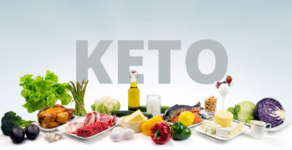The Ketogenic diet is getting more and more popular – it certainly isn’t rocket science, but it still has a learning curve. And even though it can be challenging at the beginning, if you stick to it for long enough, it is an amazing and very rewarding experience that will for sure improve your quality of life.
With the rise in popularity of Keto, there is also much talk about the safety of Keto, but in reality, most people are not doing enough research to know what they should do and how, so naturally it’s not working out for them.
The truth is that cutting out carbs and sugars may not always be as straightforward as it might seem. It is a vast subject, and there is a lot of room for error. Going Keto is a journey you should enjoy and one that will change your life for the better if you do it right.
To help you get started, or to get back on track, here are the 6 most common Keto mistakes that you will experience during one part of your Keto journey.
1. Hidden Carbs
The first and most crucial step of getting your body into a state of ketosis is cutting out and limiting your carbohydrate intake.
Until you get fully “fat adapted,” you want to make sure you never go over 20 net grams of carbs per day. Depending on your metabolism and activity levels, you could maybe go a bit higher than 20 grams, but that is the standard and kind of a “safety net” for most people.
Also, you may be thinking you are eating foods that are carb-free, but they might actually not be. There are a lot of commercial foods and products out there that make it seem like they are “low-carb” or even completely “carb-free”, but when you check the Ingredients list on the back, the product could have stuff like Maltodextrin, or a sweetener like Maltitol, which is definitely not Keto-friendly and may prevent you from ever reaching ketosis.
So, what you need to do is learn which foods you can and cannot consume, and also when you buy food, always make sure to check the label on the back and look for any hidden Keto-unfriendly ingredients.
2. Sugar Substitutes
Using sugar substitutes and sweeteners are kind of related to the previous hidden carbs section.
As it is the case for food and drinks, the main thing we are looking for in a sweetener is that, when consumed, it needs to have minimal to no impact on blood glucose and insulin levels. And there are a lot of them that don’t make the cut, so to speak, including some zero-calorie sweeteners.
Stevia, Monk Fruit, Allulose, and erythritol are among the few which are safe to consume on Keto. There are also a handful of other new sweeteners on the market, but before you use one, you need to do proper research on it and make sure it meets the requirements.
Learn more about keto friendly sugar substitutes here.
And to note, it’s perfectly ok to use sweeteners in moderation to satisfy your sweet tooth, but consuming them all day long is not a real solution. When you manage to get “fat adapted” and reach ketosis, your hunger and cravings for carbs will go way down anyway.
3. Not eating enough fat
Other than consuming too many carbs, not eating enough fat can also throw you off balance and create issues. Dietary fat is essential on Keto primarily for two reasons:
Both dietary and your own fat are now your body’s primary energy fuel, especially when fully “fat adapted.” If you are regularly not consuming as much fat as your body needs, you will start experiencing symptoms like very low energy, fatigue, hunger, cravings, headaches, etc.
Healthy fats are needed to build, repair and maintain vital membranes for all cells in the body.
Just note that it is not just about quantity, but also about the quality of fats you consume. You want to focus on adding healthy fats like olive oil, coconut oil, butter, MCT oil, high-fat cheeses, high-fat nuts and seeds (make sure they are Keto-friendly!) and so on.
Also, if you are just starting out, it’s better not to worry about counting calories until you fully reach “fat adaptation” and ketosis. Focusing on consuming more healthy fats together with cutting out the carbs will make the transition go a lot faster.
If you are having a hard time eating more fats, you can try making some “fat bomb” recipes or make your morning coffee bulletproof by adding some MCT oil for fats and cinnamon for that extra taste. I prefer using powdered MCTs for coffee, as it blends way more easily and doesn’t make your coffee “oily.”
4. Cheating
Unlike other diets, being on a Ketogenic diet isn’t trying to eat healthy “most of the time.” It’s about consistency. Your body has to make a complete metabolic change, from using glucose to running on fat for energy. And that’s something that takes time. It’s not like a light switch you can turn on and off whenever you want – especially in the beginning until you get fully “fat adapted.”
Depending on your metabolism and what you eat, getting into ketosis can take you anywhere from 24 hours to a week. In addition, becoming fully fat adapted usually takes 3-6 weeks.
So, cheating can potentially undo days of consistency and hard work. Not to mention that you are very likely to get the “keto flu” like symptoms every time you cheat, and who wants to go through that just for one cheat meal? That’s right, nobody.
And, I mean… you can have bacon while on Keto, which other diet allows something like that? No cheating.
5. Eating too much protein
For some odd reason, people often believe Keto is a high-protein diet.
Keto is actually a high-fat, low-carb, moderate-protein diet, or to be more precise, 80% of the calorie-intake should be from fats, 15% from protein and 5% from carbs (the carbs should come from nutrient-dense, low-starch veggies).
Protein is very easy to go overboard with since it’s in a lot of foods, like all kinds of meats, fish, eggs, cheese, and even in nuts. And if you consume a lot of protein, the excess protein actually turns into sugar (glucose) through the process of gluconeogenesis [1], which can certainly knock you out of ketosis.
So, at least for a period of time, it’s recommended that you track your macros until you get an idea of what foods and how much of it you should eat. Just note that unlike protein and carbs, which contain 4 calories per gram, fats contain 9 calories per gram of fat.
6. Not taking electrolytes
And last but not least, electrolytes.
When some people start a Keto diet, they may experience “flu” like symptoms like fatigue, headaches, diarrhea, which often makes one believe that the Keto way of eating is not right for their bodies. But this is just a transition period until you reach ketosis.
And this is because, when we completely cut out carbs, our body produces less insulin and glycogen (carbs) stores are depleted. For every gram of glycogen, three grams of water are stored as well. That’s why when people start a Keto diet, for the first few days they usually lose a couple of kilograms of water weight and feel less bloated.
While looking better is the upside, the downside is, with the flush of water, electrolytes like sodium, potassium, and magnesium are excreted as well, which causes the “flu” like symptoms.
Taking electrolytes is a very easy way that will quickly fix most of these transition “side-effects.” Eating bone broth daily and adding pink Himalayan salt to your foods should do the trick, but you can also take an electrolyte supplement to make the transition even smoother.
Author bio
An author and health enthusiast Alex Reed, started Bodyketosis with a mission to help you to take charge of your weight and health using the keto lifestyle. Through personal experience and extensive research, he offers insightful tips for everything keto.








